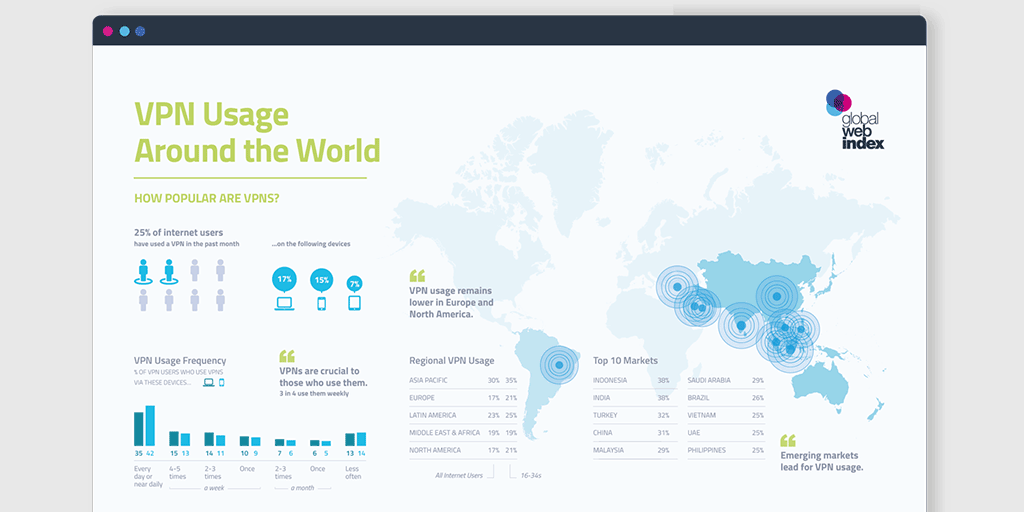One thing that always strikes me when I am meeting industry figures in LA, London or New York, is how few of them have any real grasp of how common/easy many forms of piracy are.
Part of the issue is that those media execs have all the Cable/Netflix/HBO/Sports packages they need to see the content they want; and thus suffer no supply & demand imbalance in their own personal content world. The other reason is that they tend to be older and as such belong to that 40+ age group that still pay for content (much to the amazement of their younger relatives!). A mere 13% of 45-64 year olds use a VPN, a huge contrast to the 16-34 year old bracket who make up 68% of the VPN age demographic (according to Global Web Index’s latest survey of VPN users).
Mainstream media outside of the US, on the other hand, writes with a deep and broad knowledge of different piracy methods; from Kodi Boxes to VPNs and DNS Proxies, with 1 in 4 internet users employing a VPN in the last month. Canada, Australia and Singapore’s mainstream media often have front page news about the latest hit to their viewing “rights” because of some introduction of piracy controls by one OTT broadcaster or another. Malcolm Turnbull, the Prime Minister of Australia, even reassured his fellow Australians that it is perfectly legal to use VPNs to watch US Netflix from Australia.
So no surprise then that the Singapore Straits Times, in covering the changing OTT landscape, casually include a complaint about having to also pay for a VPN to watch US content on Amazon and Netflix!
Such an assertion is just common knowledge in markets around the world, but would seem alien to many figures in the industry in LA etc. For them, they would wonder “Why would anyone turn on a VPN?”

Global Web Index’s latest research into VPN usage only serves to prove this point. Worldwide VPN usage is standard for more than 25% of net users and they are turning on VPNs primarily to access content from abroad. That is why they pay for a VPN and why they use one. However in the US, the rationale (and association in Americans’ eyes) is to protect users’ privacy. So, if an American Film, TV and Sports exec hears the term VPN, he or she is not thinking of them as a threat to their global windowing strategy (which is crucial in turn to their need to optimize sales and maximize value of content by selling exclusively to the highest bidder); instead their thoughts are that VPNs are nothing to do with piracy and just to do with privacy… which in the US market is mostly true; but it is only true in the US market.
This kind of cultural assumption is of course very dangerous when you are applying risk profiles from a domestic market through to a global one.
Understanding piracy in its many forms, whether of the PirateBay variety or the VPN variety, requires a deep understanding of the situation in every market and across every demographic. The danger for the industry is if decisions are made with LA’s media industry execs’ rose-tinted glasses only, and pay no regard to what is happening elsewhere in the world.
With the kind of upheavals that are happening currently in terms of new entrants to the market (such as Facebook, Google, Amazon, etc) and the migration of eyeballs from Set Top Box based viewing to multi-screen OTT based viewing, now is not the time to neglect the reality of how content is being accessed and where value (for the Rights Holders and their traditional customers) is leaking away.



